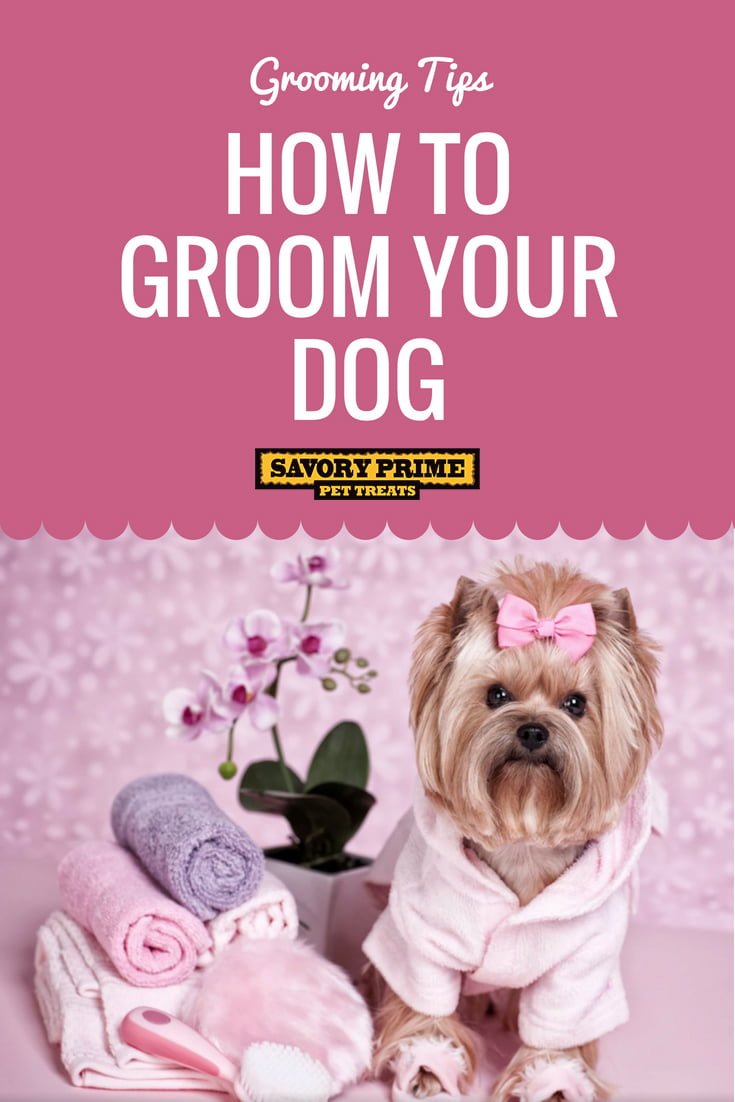Good grooming will help your dog look and feel his best. Routine grooming sessions also allow you to examine your dog’s coat, teeth, eyes, ears, and nails for signs of problems. How often you need to groom your dog depends on his size, breed, and type of coat.
Brushing
Several brushing sessions a week will keep the average dog neat and clean; daily attention is even better. Brush all the way down to the skin, letting the massaging action stimulate blood circulation and loosen and remove flakes of dandruff.
The kind of equipment you need depends on your dog’s coat texture and length. Longhaired dogs need pin brushes, which have long, round-ended stainless-steel or chrome-plated pins. Short-, medium-, and some long-coated breeds need bristle brushes. There are also slicker brushes for removing mats and dead hair; rubber curry combs to polish smooth coats and remove dead hair; clippers, stripping knives, rakes, hair dryers, and other grooming tools.
When brushing, always check for burrs and other stubborn plant material; mats, which most frequently form behind the ears and under the legs; and any cuts or scrapes on the skin itself.
All dogs shed, though some definitely shed more than others. Regular brushing will help keep shedding under control.
Bathing
Your dog should have regular, but not frequent, baths, depending on the breed and coat of your dog. Too-frequent washing removes natural oils and causes the coat to become dry and harsh.
When necessary, use a mild shampoo formulated for dogs. Stand the dog in a tub or basin, and put cotton balls in his ears and a couple of drops of mineral oil in his eyes. Wet the dog with warm water and apply shampoo from the neck back. After lathering and scrubbing, rinse your dog thoroughly with warm water. Rub vigorously with a towel (he’ll help you with vigorous shaking!), and then blow-dry if necessary. Comb or brush as required.
Nail Trimming
Nails must be kept short for the feet to remain healthy. Long nails interfere with the dog’s gait, making walking awkward or painful. They can also break easily. This usually happens at the base of the nail, where blood vessels and nerves are located, and precipitates a trip to the veterinarian. If you can hear the nails clicking on the floor, they’re too long.
To trim your dog’s nails, use a specially designed clipper. Most have safety guards to prevent you from cutting the nails too short. You want to trim only the ends, before the “quick” which is a blood vessel inside the nail. (You can see where the quick ends on a white nail, but not on a dark nail.) Clip only the hook-like part of the nail that turns down.
Many dogs dislike having their nails trimmed. You can make it a painless procedure by getting your dog used to having his feet handled in puppyhood. Start trimming gently, a nail or two at a time, and your dog will learn that you’re not going to hurt him.
If you accidentally cut the quick, stop the bleeding with some styptic powder. If you find it impossible to clip your dog’s nails, take him to a veterinarian or groomer.
Ear Cleaning
You should clean your dog’s ears once a month, more if he’s prone to ear problems. Clean the outer part of the ear only, using a damp cloth or a cotton swab soaked in mineral oil. Never force anything into the ear. Some dogs need the hair plucked just inside the ear to keep air circulating; ask your veterinarian if this is necessary for your dog.
Eye Cleaning
Clean slight discharges with a moist cotton ball. Do not put anything irritating in your dog’s eyes.
Tooth Brushing
Clean your dog’s teeth frequently with special toothbrushes and toothpaste designed for dogs. If your dog balks at having his teeth brushed, get him used to it by rubbing his teeth and gums with your finger. Then put a little of the toothpaste on your finger and let him sniff and lick it; do the same with the toothbrush. Make sure to provide chew toys that will help clean his teeth. As your dog gets older, he may have a buildup of tartar that requires special cleaning by a veterinarian.
Anal Sacs
Anal sacs are located on each side of your dog’s anus; they are glands that exude scent when your dog has a bowel movement. If you notice your dog scooting along on his rear or licking or scratching his anus, he may have impacted anal sacs. Ask your veterinarian how to treat an anal sac problem.
Recent Pet Posts
Blog Categories
Product categories
- Accessories (7)
- Chicken & Veggie Wraps (8)
- Grillers Jerky Tenders (4)
- Jerky Treats (10)
- Made in the USA (9)
- Non-Rawhide Treats (28)
- Beggar Bone (11)
- Bully Sticks (4)
- Butcher Bone (4)
- Cod Skin Fish Treats (3)
- Pork Skin Twists (2)
- Pressed Rawhide Bones & Rolls (16)
- Bones & Rolls (6)
- Pressed Rawhide Bulk (6)
- Twist Sticks (4)
- Savory Munchies (13)
- Supreme Bones & Rolls (48)
- American Rawhide Bulk (16)
- Rawhide Bones (14)
- Rawhide Chips (6)
- Rawhide Rolls & Sticks (12)
- Uncategorized (8)


